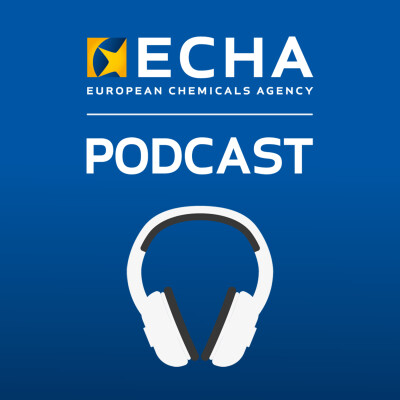ECHA’s Member State Committee: Resolving divergences for chemical safety
00:00 / 32:51
1,390
Chapters
#1
Introduction to the Member State Committee and the guests of this episode
00:50
#2
What is unique about Member State Committee & how it contributes to chemical safety in the EU?
02:37
#3
What is the most important task of the Committee?
06:25
#4
How do you navigate differing national priorities when taking decisions?
14:08
#5
How do you reach consensus and solve difficult situations?
20:55
#6
How is the work of Member State Committee linked to the work of ECHA's Committees for Risk Assessment and for Socio-Economic Analysis?
23:43
#7
What are the emerging chemical concerns or hot topics that you expect to address in the future?
26:40

ECHA’s Member State Committee: Resolving divergences for chemical safety
In this episode of the Safer Chemicals Podcast, we explore the vital work carried out by the European Chemicals Agency’s Member State Committee. Host Päivi Jokiniemi is joined by Katinka van der Jagt, Chair of the Member State Committee, alongside two of the committee's national members, Katarzyna Malkiewicz from the Swedish Chemicals Agency KEMI, and Agnieszka Dudra from the Polish Bureau for Chemical Substances.
The European Union, a partnership of 27 countries, is committed to building a safer and healthier future. ECHA’s Member State Committee exemplifies this commitment by bringing together representatives from all EU member states to reach consensus on key chemical safety decisions.
Throughout the episode, our guests talk about the unique aspects of the Member State Committee, discussing its tasks, responsibilities, and the collaborative nature of its decision-making process. They highlight the importance of science-based decisions, transparency, and the committee’s role in promoting the substitution and minimisation of harmful substances.
Key topics:
Committee voting procedure and its impact on committee collaboration
Generation of experimental data for industrial chemicals and its significance in identifying hazardous substances
Identification of substances of very high concern, particularly those with endocrine-disrupting properties
National perspectives on chemical safety priorities and how they influence committee decisions
Importance of science and legal frameworks in resolving divergences and achieving consensus
Future challenges, including emerging chemical concerns like nanomaterials, neurotoxicity, immunotoxicity, and the development of non-animal testing methods
Useful links
**************
Follow us on:
Disclaimer: Views expressed by interviewees do not necessarily represent the official position of the European Chemicals Agency. All content is up to date at the time of publication.
Hosted by Ausha. See ausha.co/privacy-policy for more information.
Powered by Ausha 🚀